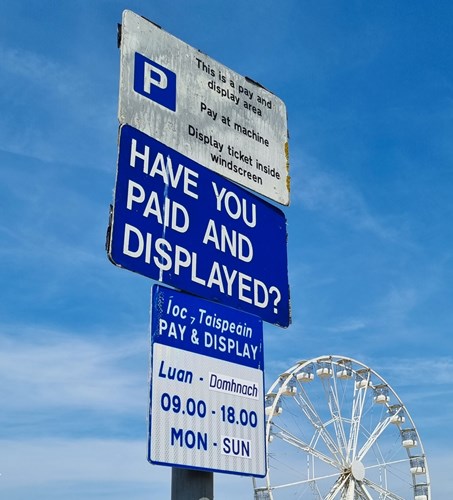
On-street parking
On-street parking refers to the practice of parking vehicles on the side of a public road or street. It is a common method of parking in urban and suburban areas where parking lots or dedicated off-street parking spaces may be limited.
Here's a breakdown of the key aspects of on-street parking:
-
Parking Spaces: On-street parking spaces are typically designated areas along the sides of roads where vehicles can park. These spaces are marked with painted lines or signage indicating parking regulations, such as time limits, permit requirements, or payment instructions.
-
Regulations: On-street parking regulations may vary depending on the location and local governing authorities. Regulations can include restrictions on parking duration (e.g., time-limited parking), parking permits or zones for residents or specific groups, and metered or paid parking. It's important to check the signage or parking meters to understand and comply with the specific regulations in effect.
-
Parking Meters: In many urban areas, on-street parking spaces may be equipped with parking meters. These meters require drivers to pay for the time they park by inserting coins, using prepaid parking cards, or making payments through mobile applications. The payment is often displayed on a receipt or by a digital display on the meter.
-
Enforcement: Local authorities, such as parking enforcement officers or traffic police, monitor on-street parking to ensure compliance with regulations. They may issue parking tickets or fines for violations, such as parking in restricted areas, exceeding time limits, or not paying for parking when required.
-
Parking Availability: On-street parking availability can vary greatly depending on the location and time of day. In busy areas, finding an open parking space may be challenging, especially during peak hours. It's important to be aware of any time restrictions, as overstaying the allowed time can result in penalties.
-
Benefits and Challenges: On-street parking offers convenience, especially in areas where off-street parking options are limited. It allows drivers to park closer to their destinations, reducing the need for long walks. However, on-street parking can be limited, competitive, and subject to regulations and fees.
Off-street parking
Off-street parking refers to parking facilities that are located away from public roads or streets. These dedicated parking areas are specifically designed for parking vehicles and are separate from the regular flow of traffic. Off-street parking provides a convenient and organized way for drivers to park their vehicles.
Here are some key points about off-street parking:
-
Parking Facilities: Off-street parking facilities can take various forms, including parking lots, parking garages, or parking structures. These facilities are usually privately owned or operated by public entities, such as municipalities, shopping centers, airports, or office buildings.
-
Designated Spaces: Off-street parking areas are organized into designated parking spaces, which are marked and arranged in rows or sections. The spaces can be clearly delineated by painted lines, numbers, or other indicators. This helps optimize the use of space and allows for efficient parking and retrieval of vehicles.
-
Controlled Access: Off-street parking facilities often have controlled access points, such as entrance and exit gates, ticketing systems, or automated barriers. These access mechanisms help manage the flow of vehicles, ensure security, and regulate parking fees, if applicable.
-
Availability and Capacity: Off-street parking facilities typically offer a larger capacity compared to on-street parking. They can accommodate a higher number of vehicles, especially in multi-level parking garages or expansive parking lots. This can provide more options for finding available parking spaces, particularly in high-demand areas.
-
Payment Systems: Off-street parking facilities may require payment for parking, depending on the specific location and regulations. Payment methods can vary and may include ticket-based systems, pay stations, prepaid permits, or digital payment options. Some facilities also offer subscription-based or monthly parking plans for frequent users.
-
Security and Convenience: Off-street parking areas often provide enhanced security features such as lighting, surveillance cameras, and security personnel. This helps ensure the safety of parked vehicles and deter unauthorized access or incidents. Additionally, off-street parking is usually designed for convenience, with considerations like wider parking spaces, accessibility features, and proximity to buildings or amenities.
Off-street parking is commonly used in various settings, such as shopping centers, residential complexes, airports, and office buildings. It offers several advantages, including greater parking capacity, improved security, and enhanced convenience for both drivers and property owners.



